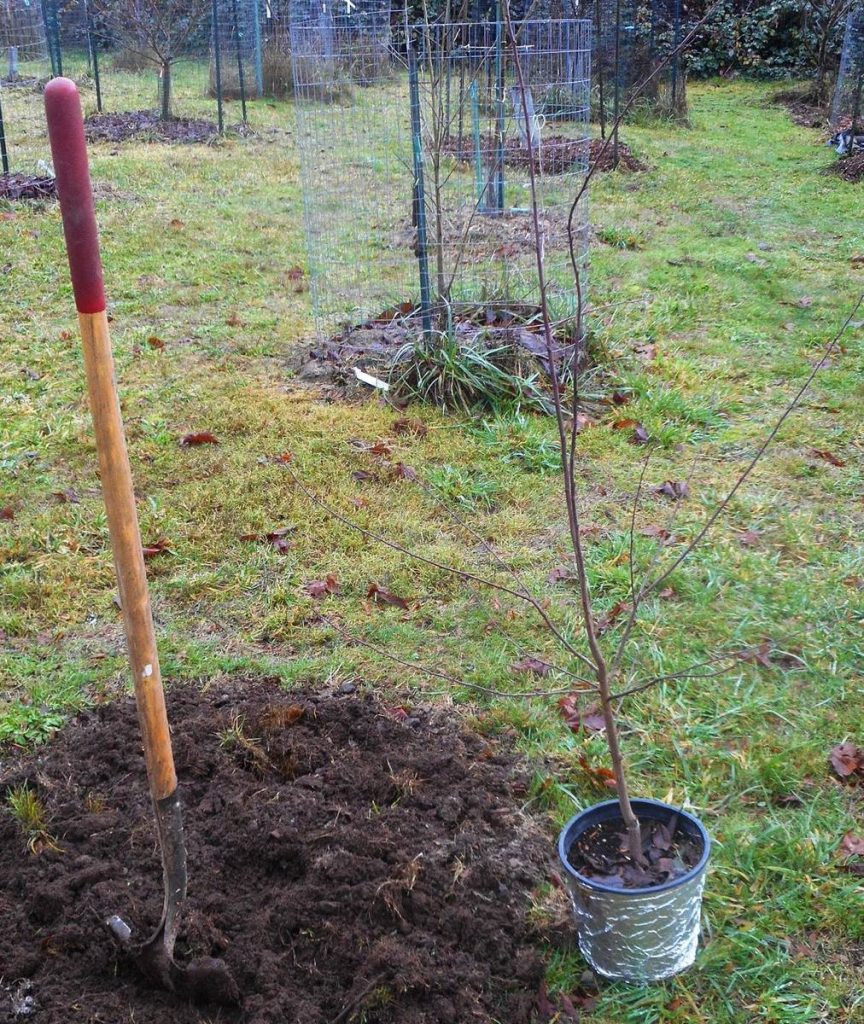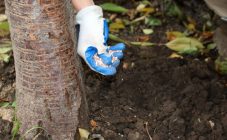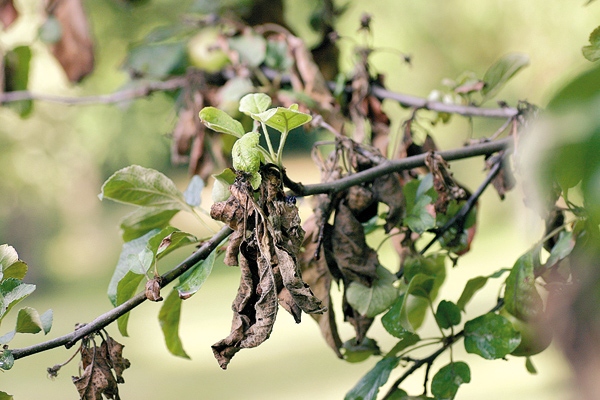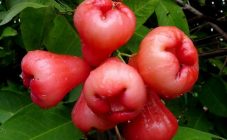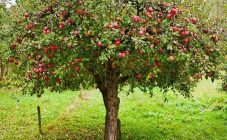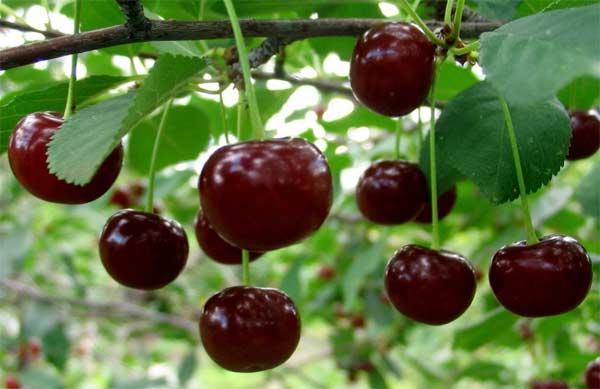Content:
The assortment of plums, consisting of several thousand varieties, is constantly updated with new species. These include varieties of Russian selection. One of the most promising among them is the Firefly variety.
Description of plum varieties Firefly
Plum belongs to one of the most common fruit plants of the Rosaceae family. Plants are perennial, mostly tree-like.
Firefly - a variety of home plum, bred on the basis of VNIIGiSPR them. Michurin (Michurinsk). It was obtained by breeders Kursakov, Kursakova, Nikiforova and Bogdanov by purposeful hybridization of the varieties Eurasia-21 and Volzhskaya krasavitsa. In 2004, the Firefly was transferred to the State Variety Testing, and since 2012 it has been zoned for the Central Black Earth Region.
Brief description of the variety
The trees are characterized by strong growth, reaching a height of 5 meters. The crown is oval, raised, spreading, medium thickened. Stems are thin, pubescent, erect, brown-brown in color. The foliage is medium in size, dark green, oblong, obovate or elliptical in shape. Notches are observed along the edges of the leaves. The leaf plate is concave, with a smooth matte surface. The petioles are colored, medium in size. Inflorescences are white, medium in size.
The firefly forms wide-rounded large (up to 40 g) fruits. The peel is thin, naked, yellow with greenish blotches and a slight waxy coating. Peduncles are of medium length and thickness, easily detached from the stems. The stone is small, easily separated from the pulp.
The pulp is firm and juicy, yellow in color. The taste of the fruit is pleasant, sweet with a slight sourness. Taste rating - 4.4 points on average according to tasters. The crop is characterized by medium transportability.
Agrotechnics
For the cultivation of Firefly seedlings, plots with groundwater at a level of at least 2 meters are needed. Like any plum, the Firefly variety requires enough space: plants should not be placed very close to each other, as this will lead to a violation of ventilation and lighting, and as a result, to the development of diseases and deterioration of the quality of the crop. A distance of 3 m is left between the seedlings, and the row spacing should be 4 m.
Landing
A planting hole is dug 70 × 70 cm in size and about half a meter deep. It is necessary to add a mixture of organic and mineral fertilizers to the hole, consisting of the following components:
- manure - 1 bucket;
- potash fertilizers - half a handful;
- superphosphate - two handfuls;
- wood ash - shovel bayonet.
The seedling is placed in a hole and the roots are carefully straightened so that they do not bend and do not cling to each other. After that, the plant is tied to a peg previously driven into the hole and sprinkled with soil. It is necessary to constantly compact the soil in the hole so that there are no empty cavities in the ground. The root collar of the plum seedling should be 5-7 cm higher than the soil level. A rim is dug around the edges of the planting hole, into which several buckets of water are poured.This is necessary so that the liquid does not pour out of the hole. Immediately after irrigation, you need to mulch the hole with peat, humus, and if it is impossible to use them, with soil. This procedure will keep the soil moist for as long as possible.
Watering
Irrigation is especially important for Firefly seedlings in the early years. Watering is carried out regularly as the upper fertile soil layer dries up.
As the trees enter the fruiting season, the irrigation frequency is reduced to three per season. The first of them is carried out before the beginning of the flowering phase, the next - during the formation of ovaries. The last watering is carried out in the first half of autumn. Irrigation is carried out in the evenings, if possible in cloudy weather.
Protection from pests and diseases
Whitewashing of trunks is carried out against the influence of unwanted pathogens in early spring. It is the trunks that often become the place where pathogens and harmful insects live. Mature plants have a denser bark, which often exhibits cracking and other damage. Through them, infection with one or another ailment can occur. Dead or flaking areas of the bark are cleaned out so that healthy bark or whole plant tissue appears.
Places of plants that have received damage are abundantly treated with a solution of iron or copper sulfate. After that, they are coated with garden varnish. If mosses or lichens begin to form on the bark, they are also cleaned off, and the place where they were is blanked out.
In the spring, before the beginning of plum flowering, Firefly plantings are treated with insecticides for prophylactic purposes. A second similar procedure is carried out after the completion of this phase, during the formation of the ovary.
Every year, the plants are sprayed with Bordeaux liquid once a season. It is a very effective topical agent that protects plants from disease. To improve the effect, the leaf blades should be treated on both sides, and the spraying time should be set for the period of ovary formation.
In the autumn, it is necessary to remove from the plot and burn all the remaining foliage, dry branches, mummified fruits from the stems. These parts of the plant are most often the wintering place for pathogens.
In the first few years of cultivation, weeds growing in the near-stem sector of plants can cause significant damage to the Firefly. They draw moisture and nutrients from the soil onto themselves and disrupt plant growth. It is necessary to remove them in a timely manner. It is best to do this after irrigation, while loosening the ground at the same time.
Young saplings of plum varieties Firefly often suffer from the actions of mice in the winter. Rodents make moves in loose snow, get to the bark and gnaw it. To prevent this from happening, it is necessary to tamp the snow after each snowfall. Mature plants hardly suffer from the actions of harmful animals.
Pollination
Plum Firefly, like most of the other varieties obtained with the participation of Eurasia-21, does not belong to the category of self-fertile. To carry out normal pollination and get a good harvest, it is necessary to plant other plum varieties nearby that coincide with the Firefly in terms of flowering.
Best pollinators for the Firefly plum variety:
- Renklode is fruitful;
- Lighthouse;
- Collective farm renklode.
Top dressing and pruning
Under the plantings of the Firefly, organic fertilizers are applied every three years. Mineral dressing is applied during the autumn digging of the soil in the same quantities as during the planting of the seedling.
When the trees are mature, it is recommended that you mow the grass around them and do not remove it, leaving it in place. Thus, tinning is carried out. The mown vegetation serves both as a fertilizing agent and as a mulching material, preventing the development of new weeds.
Pruning young plums begins from the second year of seedling cultivation. When forming the crown, it is necessary to focus on the tiered form, as it most fully corresponds to the plum culture. Sanitary pruning of plums is carried out annually, during which diseased, damaged stems, as well as those shoots that thicken the crown, sprouting up and in, are removed. The place of each cut must be treated with garden varnish.
Advantages and disadvantages
The plum variety Firefly has a number of advantages over other common varieties of this crop. These include, in particular:
- high level of winter hardiness and frost resistance;
- increased degree of heat resistance and drought resistance;
- average resistance to major diseases and pests of plums;
- large harvest with high commercial qualities;
- annual fruiting without periodicity.
The only significant drawback of the variety is its self-sterility. However, in the presence of appropriate pollinators, this negative property is nullified.
The plum variety Firefly requires maintenance and suitable growing conditions. If they are observed, the variety will delight summer residents with a high and high-quality yield at the end of the growing season.

